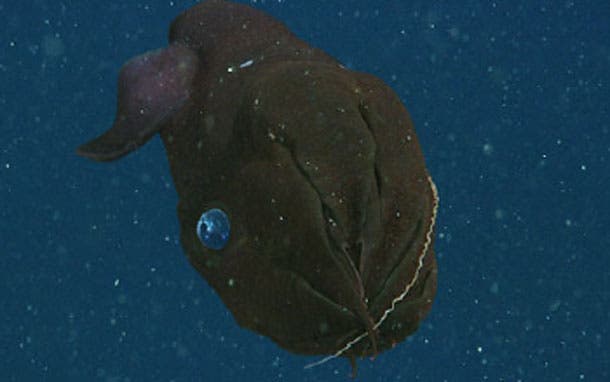
A peculiar animal, which thanks to the harsh environment it calls home couldn’t be studied very well, the vampire squid is actually a detritus gobbler, skimming the oceans for any kind of remnants from crustacean eyes and legs to larvae poop – quite far from a blood-sucking predator. These conclusions could be made only recently, and were described in a paper published in the journal Proceedings of the Royal Society B.
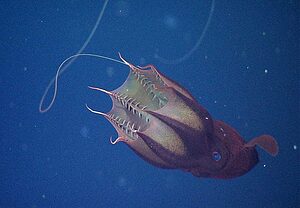
Actually, the Vampyroteuthis infernalis, its scientific name which translates in vampire squid from Hell, isn’t actually a squid. An evolutionary relic which has existed long before its other, modern cephalopod relatives, the animal only grows to about a foot (30 centimeters) and lives in complete pitch black, 600 to 900 meters below the ocean’s surface. At this depth, pressure and low oxygen discourages life, but the vampire squid has been minding his own business for million years.
With little prey lurking about, the vampire squid is amazingly the only cephalopod that doesn’t hunt for food. Instead, it’s a scavenger, that feasts on the various remains hovering over the water’s surface. With this in mind, it makes full use of its two wing-like flaps called called filaments, which coil up into special pockets, and can extend to 8 times the animal’s length – these are used to capture the various debris it feeds on. Its other arms are connected through a web-like cloak, equipped with spikes on the interior, which allows the vampire squid to ensnare great amounts of ‘prey’ from eggs, algae to pellets of faeces, bits of jelly to crustacean body parts. This coupled with a bloody colored texture, and amazing opal-blue eyes, grants the cephalopod a scary appearance and earned its name.
The scavenger of the ocean’s depths
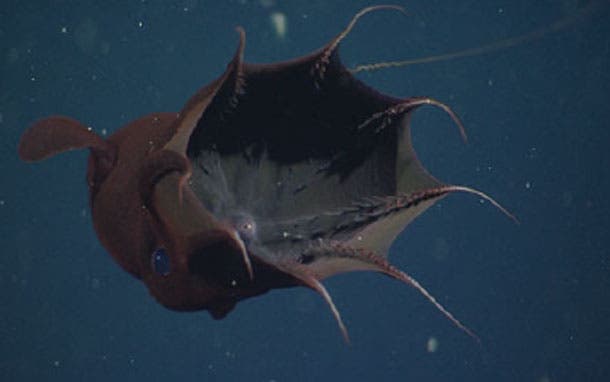
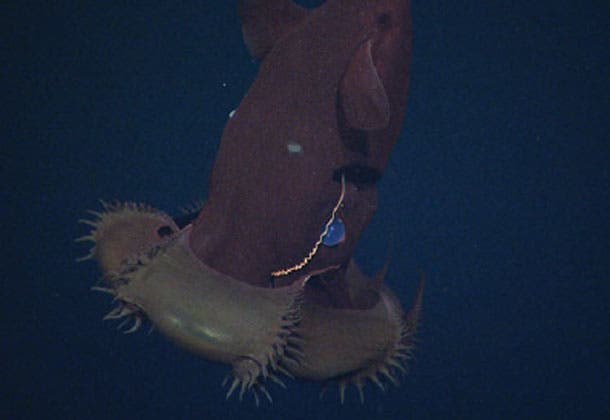
Anatomically wise, the vampire squid doesn’t have any suction power, compared to its relatives; instead it relies on a mucus it excretes and which it uses to coat the food it ensnares under its web. This passive eating style, as well as its extremely low metabolisms and a specialized protein in their respiratory system that clings strongly to oxygen molecules, enables the vampire squid to live in low-oxygen zones in the ocean. And if you still don’t think the vampire squid is cool, learn that its also capable of bio-luminescence, as it lights up the surrounding water with flashing organs found all over its body, and especially at the tips of its arms.
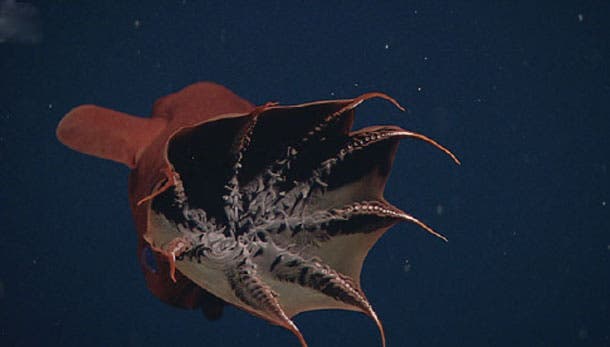
Though the vampire squid was first discovered more than a century ago, little has been know about this elusive animal, until Hendrik Hoving and Bruce Robison from the Monterey Bay Aquarium Research Institute (MBARI) analysed footage of 170 vampire squids, taken over the last decade by the institute’s submersibles and presented their findings.
“It shows again that cephalopods are extremely adapted in a wide variety of ways to the ocean habitat,” Hoving said. “They’re very successful in the world’s oceans. It’s amazing that some of these cephalopods have even found ways to live under conditions that are adverse to most other animals.”






